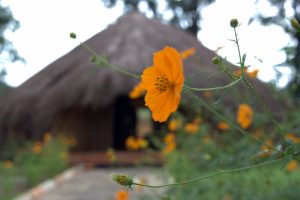Top 10 Must-See Animals in Uganda
Uganda’s diverse ecosystems offer a rich array of wildlife experiences. From the majestic mountain gorillas to elusive leopards, Uganda is a treasure trove for animal lovers and wildlife enthusiasts. Here’s a guide to the top 10 must-see animals in Uganda, complete with details and descriptions to enhance your safari experience.
1. Mountain Gorillas
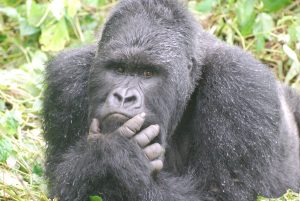
Scientific Name: Gorilla beringei beringei
Habitat: Bwindi Impenetrable Forest and Mgahinga Gorilla National Park
Description: The mountain gorilla is one of the most iconic species in Uganda. These gentle giants are known for their impressive size, with males called silverbacks due to the silver hair on their backs. Gorilla trekking in Bwindi or Mgahinga offers a rare and intimate experience to observe these critically endangered primates in their natural habitat. They are social animals, living in family groups led by a dominant silverback.
Why See Them
Witnessing a mountain gorilla up close is a once-in-a-lifetime experience that provides insight into their complex social structures and behaviors. They are also a symbol of conservation success efforts.
2. African Elephant
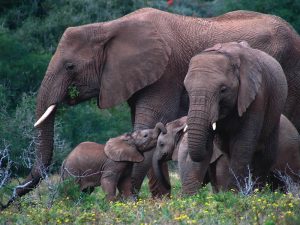
Scientific Name: Loxodonta africana
Habitat: Murchison Falls National Park, Queen Elizabeth National Park
Description: The African elephant is the largest land mammal, characterized by its large ears, long trunks, and tusks. Elephants are known for their intelligence, complex social structures, and long migrations. In Uganda, they are commonly seen in the savannahs and woodlands of Murchison Falls and Queen Elizabeth National Parks.
Why See Them
Observing elephants in their natural habitat provides a glimpse into their intricate social interactions and massive presence. Their behavior, from feeding to bathing, is fascinating to watch.
3. African Lion
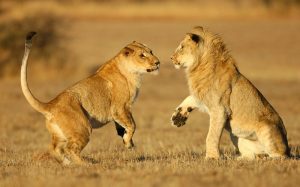
Scientific Name: Panthera leo
Habitat: Queen Elizabeth National Park, Murchison Falls National Park
Description: Known as the “king of the jungle,” the African lion is a top predator with a majestic mane (in males) and a powerful build. Lions are social animals, living in prides consisting of related females, their offspring, and a few males. They are often found in open savannahs and grasslands.
Why See Them
Lions are at the top of the food chain and their hunting and social behaviors are captivating to observe. Spotting a pride of lions in the wild is a highlight of any safari.
4. Leopard
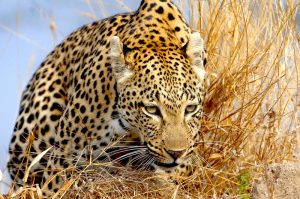
Scientific Name: Panthera pardus
Habitat: Queen Elizabeth National Park, Kidepo Valley National Park
Description: Leopards are elusive and solitary cats, known for their beautiful spotted coats and stealthy hunting techniques. They are excellent climbers and often hoist their prey into trees to avoid scavengers. Leopards are more challenging to spot due to their camouflage and nocturnal habits.
Why See Them
The rarity of leopards and their secretive nature make sightings particularly thrilling. Observing their behavior, especially in the early morning or late afternoon, can be a memorable experience.
5. Common Hippo

Scientific Name: Hippopotamus amphibius
Habitat: Murchison Falls National Park, Queen Elizabeth National Park
Description: Hippos are large, semi-m aquatic mammals known for their massive size, large mouths, and amphibious lifestyle. They spend most of their day submerged in water to keep cool and are most active at night. Hippos are herbivores and graze on grass during the night.
Why See Them
Hippos are often seen in and around water bodies, making them relatively easy to spot. Their interactions and social behavior, especially when they are in the water, are fascinating to observe.
6. Chimpanzee
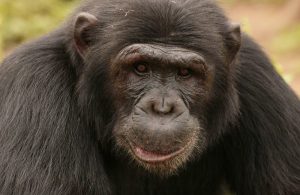
Scientific Name: Pan troglodytes
Habitat: Kibale National Park, Budongo Forest
Description: Chimpanzees are our closest living relatives, known for their high intelligence, complex social structures, and use of tools. They live in large communities and engage in various activities such as grooming, foraging, and vocalizations. They are usually found in dense tropical forests.
Why See Them
Chimpanzee trekking allows you to witness their social interactions and behaviors up close. Their use of tools and problem-solving abilities are remarkable aspects of their intelligence.
7. Rothschild’s Giraffe
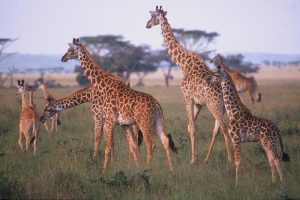
Scientific Name: Giraffa camelopardalis rothschildi
Habitat: Murchison Falls National Park
Description: Rothschild’s giraffe is one of the subspecies of the giraffe, distinguished by its lighter color and irregularly shaped patches. They are the tallest land animals and are easily recognizable by their long necks and legs.
Why See Them
Giraffes are often seen browsing on the leaves of acacia trees. Their graceful movements and unique appearance make them a favorite among wildlife enthusiasts.
8. Nile Crocodile

Scientific Name: Crocodylus niloticus
Habitat: Nile River in Murchison Falls National Park
Description: Nile crocodiles are large and powerful reptiles found in African rivers and lakes. They are apex predators with strong jaws and a fearsome reputation. They spend much of their time lying in wait for prey in the water.
Why See Them
Observing Nile crocodiles in their natural habitat, especially during boat safaris, offers a chance to see these formidable predators in action and learn about their hunting techniques.
9. Uganda Kob

Scientific Name: Kobus kob
Habitat: Queen Elizabeth National Park, Murchison Falls National Park
Description: The Uganda kob is a medium-sized antelope known for its elegant appearance and graceful movements. Males have distinctive, curved horns and are often seen in herds grazing on grasses. They are an important prey species for predators like lions and leopards.
Why See Them
The Uganda kob’s striking appearance and social behavior make them interesting to watch. Their presence also contributes to the dynamics of the predator-prey relationship in the ecosystem.
10. Batwa (Pygmy) Community
Scientific Name: Not applicable
Habitat: Bwindi Impenetrable Forest
Description: Although not an animal, the Batwa people, also known as Pygmies, are an integral part of the cultural and natural heritage of Uganda. They have lived in the forest for centuries and possess deep knowledge of the ecosystem and traditional survival skills.
Why See Them
Visiting the Batwa provides a cultural experience that complements wildlife safaris. Engaging with the Batwa offers insights into their traditional way of life and their relationship with the forest environment.
Conclusion
Uganda’s wildlife is as diverse as its landscapes, offering incredible opportunities to observe some of Africa’s most remarkable animals. Whether you’re trekking to see the mountain gorillas, spotting elephants in the savannah, or encountering elusive leopards, Uganda promises an unforgettable wildlife adventure. Each of these top 10 animals provides a unique and enriching safari experience, making Uganda a premier destination for wildlife enthusiasts. Top 10 Must-See Animals in Uganda




